Injury Prevention In Sports: The Benefit of Athlete Monitoring Systems
The Critical Importance of Injury Prevention in Sports
Participation in sports carries with it an inherent level of risk. Every time an athlete trains or takes to the field for a match, they are exposing themselves to some degree of injury risk.
If these risks are not assessed, quantified, and understood, then that amount of risk can significantly increase. Injury prevention in sports is not just about keeping athletes healthy but also about ensuring they can perform at their best consistently.
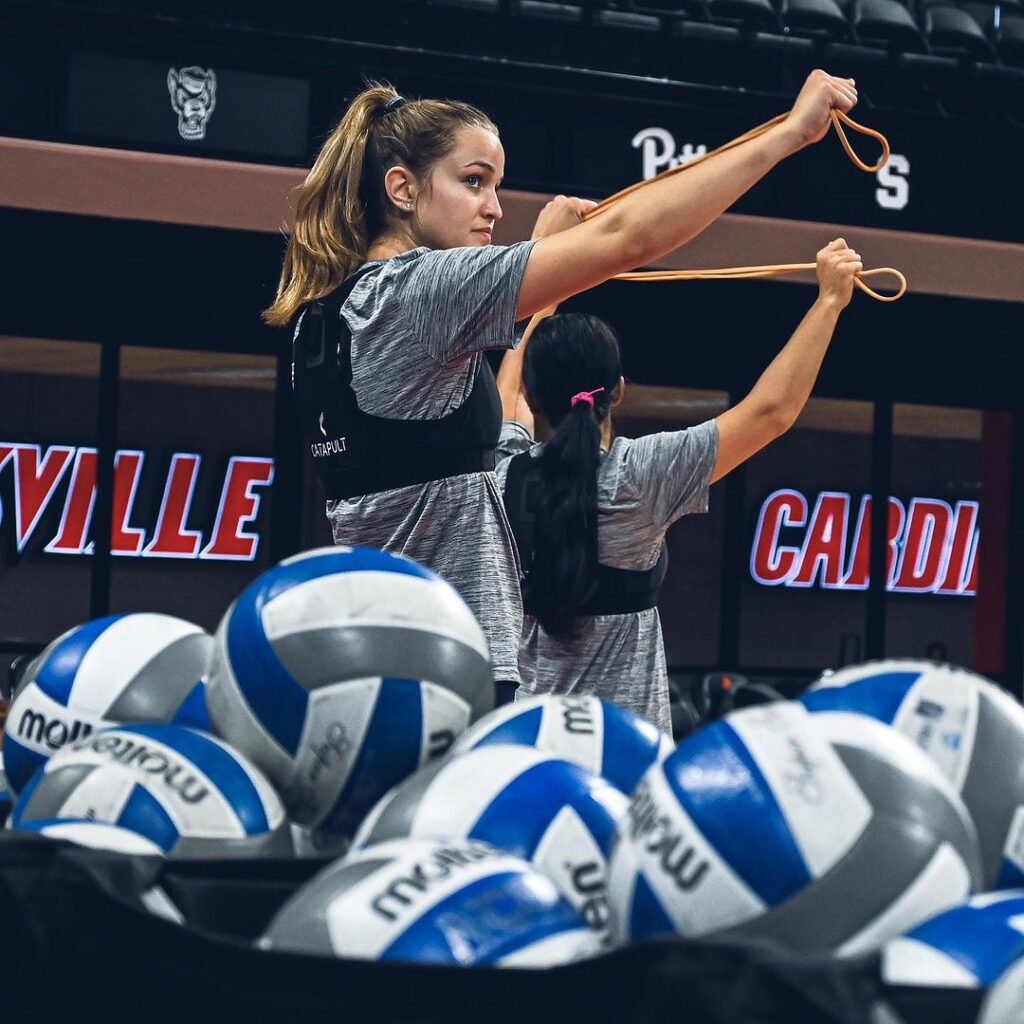
Injury Prevention ARTICLE CONTENTS:
- Introduction: Importance of injury prevention in sports and the role of athlete monitoring systems.
- What Is Injury Prevention?: Definition and how athlete monitoring aids in this.
- The Link Between Athlete Monitoring & Sports Injury Prevention: Explanation of how monitoring helps in identifying risks and aiding in return-to-play.
- Proactive Care: Importance of early detection and intervention.
- Cost of Injury & Tech Investment Return: Discussion on the financial impact of injuries and how monitoring systems can mitigate these costs.
- Fixture Congestion and Link to Injury: Effects of congested schedules on athletes.
- Key Metrics and Indicators in Athlete Monitoring: Parameters monitored by these systems.
- Heart Rate, Fatigue & Workload Impact: Exploration of how these factors influence injury risk.
- Tailoring Prevention: Sports-Specific Monitoring – How monitoring adapts to the demands of different sports.
- Integration with Athlete Training Programs: How monitoring systems integrate with training programs and use real-time data.
- Case Studies: Success Stories in Sports Injury Prevention – Examples from Duke Basketball and Game Changer Performance.
How Athlete Monitoring Systems Contribute to Injury Prevention
Advanced Athlete Monitoring Systems / wearable technologies have improved how teams approach sports injury prevention. These systems do not prevent injuries outright but enable teams to see potential red flags before an injury occurs. By providing objective data on an athlete’s performance and physical condition. So athlete monitoring technology helps identify signs of overtraining, fatigue, and other risk factors.
For instance, technology is fantastic for objectifying the return-to-play (RTP) process. Monitoring systems track various metrics, ensuring that athletes are not pushed back into play before they are fully ready, thereby reducing the likelihood of re-injury.
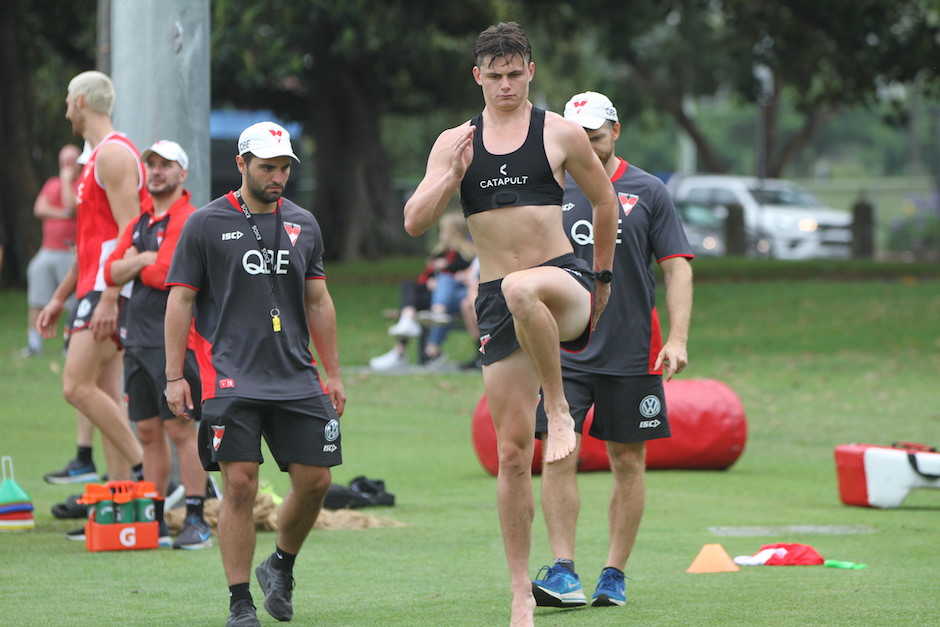
Understanding the Limitations and Mitigating Risks
It’s essential to acknowledge that not all injuries can be prevented. Some injuries, like ACL tears, often occur due to uncontrollable factors and can be considered freak accidents. However, athlete monitoring devices have proven invaluable in managing athletes ahead of soft tissue injuries, which are more predictable and preventable with the right data and insight.
Athlete monitoring systems help practitioners by providing data that can guide training adjustments, recovery strategies, and workload management. This proactive approach can significantly mitigate the risk of injuries.
Be Wary of Overpromising Technology Claims
It’s important to be sceptical of any technology or company that claims to completely prevent injuries. While athlete monitoring systems provide critical insights and data that can help reduce injury risk, claiming they can eliminate injuries is misleading. The role of these systems is to provide the necessary information to make informed decisions about training and recovery, not to guarantee injury-free performance.
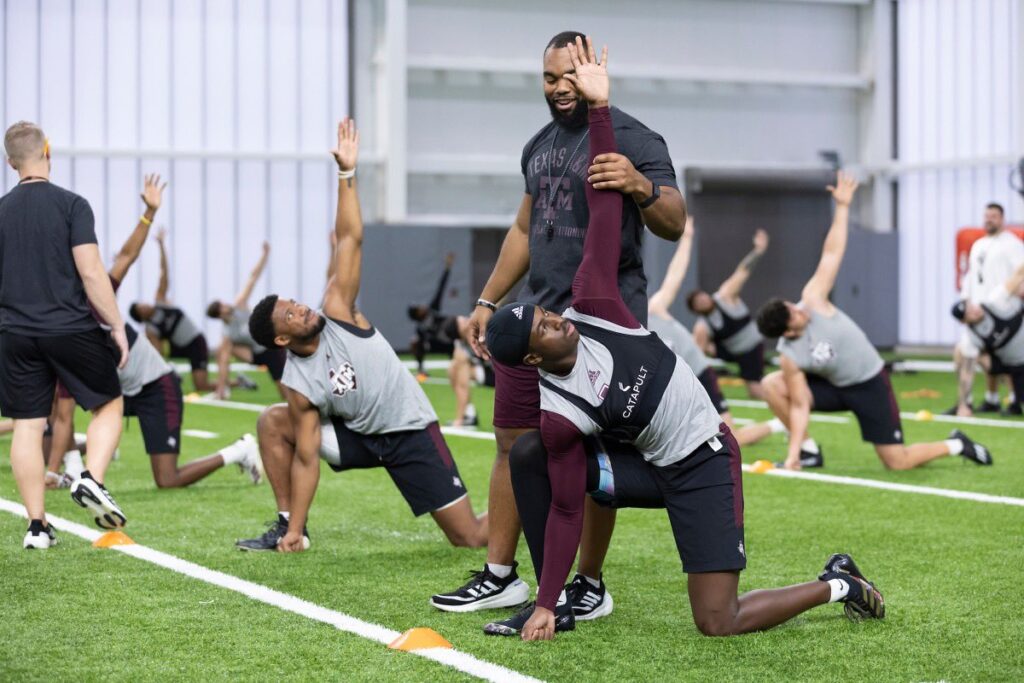
The Role of Data in Injury Risk Mitigation
The introduction of monitoring technology in sports has enabled teams, coaches, and players to objectively understand the risks associated with their sports. This has helped mitigate injury risk by giving sports teams and organizations the objective data required to inform key coaching decisions. It is, of course, inaccurate to claim that monitoring technologies can eliminate injuries, but the insights they provide can be used to identify high-risk situations and protect athletes from those scenarios where possible.
Developing Best Practices in Sports Injury Prevention
As the use of monitoring technologies continues to develop, teams around the world are adopting a distinctive set of best practices that help them manage risk more effectively. We’ve spoken to several teams from a cross-section of sports to find out how they are working to reduce the risks their athletes are exposed to. These insights can help other teams and organizations develop their strategies for using athlete monitoring systems to improve injury prevention.
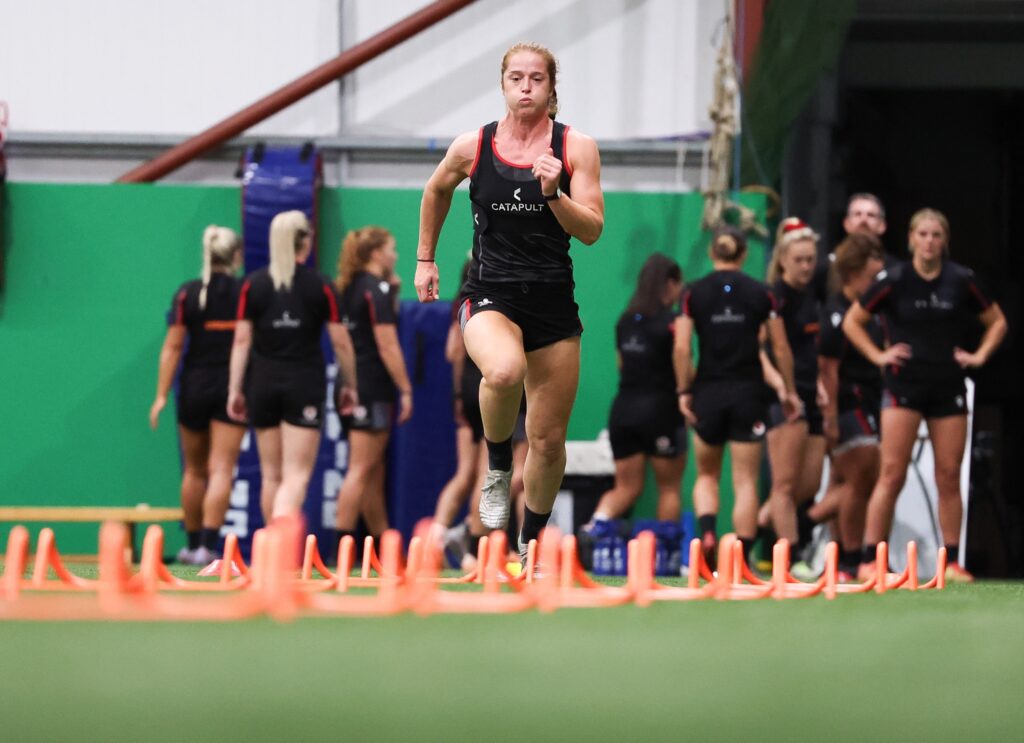
In summary, while injury prevention in sports remains a complex challenge, the use of advanced athlete monitoring systems provides invaluable data that helps teams manage and reduce injury risks. By understanding and utilizing these technologies, sports organizations can make more informed decisions, ultimately protecting their athletes and enhancing their performance.
What Is Injury Prevention?
Injury prevention in sports involves strategies and practices designed to reduce the risk of injuries during training and competition. Athlete monitoring systems aid in this process by providing data that helps identify potential risks and manage training loads effectively.
The Link Between Athlete Monitoring and Sports Injury Prevention
Athlete monitoring systems play a crucial role in sports injury prevention by identifying red flag numbers before an injury or overtraining occurs and by objectifying the return-to-play (RTP) process to avoid re-injury. These systems provide data-driven insights that help coaches and practitioners make informed decisions, thereby reducing the risk of injuries and optimizing athlete performance.
Download this ebook to learn more about building effective return-to-training programs.
Proactive Care
Early detection and intervention are key to avoiding sports-related injuries. Athlete monitoring systems enable proactive care by continuously tracking various performance metrics, allowing coaches to identify potential issues before they become serious problems.
By addressing these red flags early, athletes can adjust their training loads, receive targeted treatments, and follow customized recovery plans to minimize injury risk.
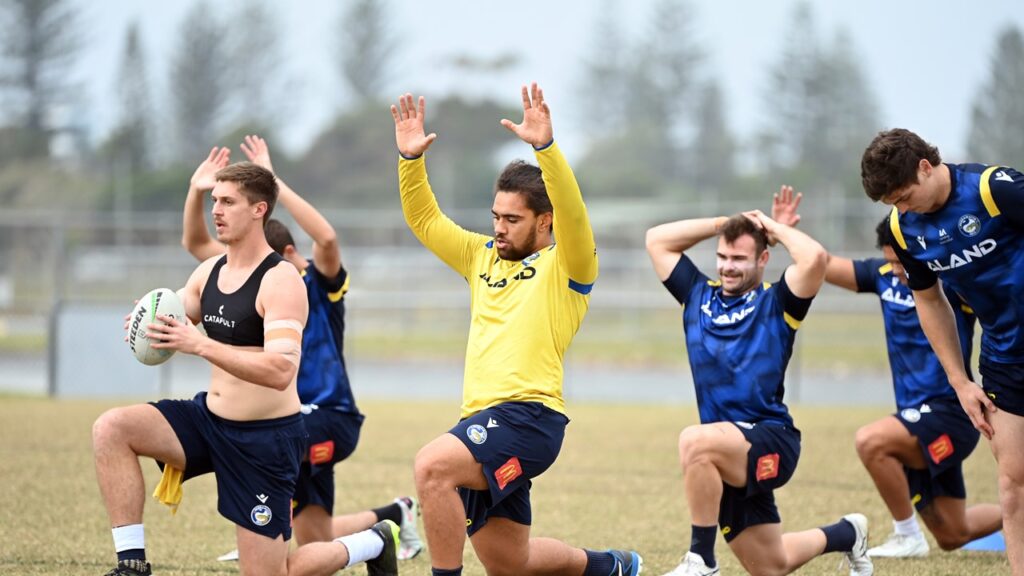
Cost of Injury & Tech Investment Return
Injuries in sports can have significant financial and performance costs.
According to a research project conducted by Catapult and the 21st Club, the average cost of an injury during the 2018/19 Premier League season was estimated at £200k in fixed wages.
Players missed a total of 18,230 days through injury, with the average Premier League player missing 8% of the campaign. For teams like Tottenham, which suffered multiple high-quality player injuries, the impact was even greater, with key players like Erik Lamela, Harry Kane, and Dele Alli missing over 30% of the season. A 10% increase in a club’s injured wage bill equates to roughly a point lost throughout a season.
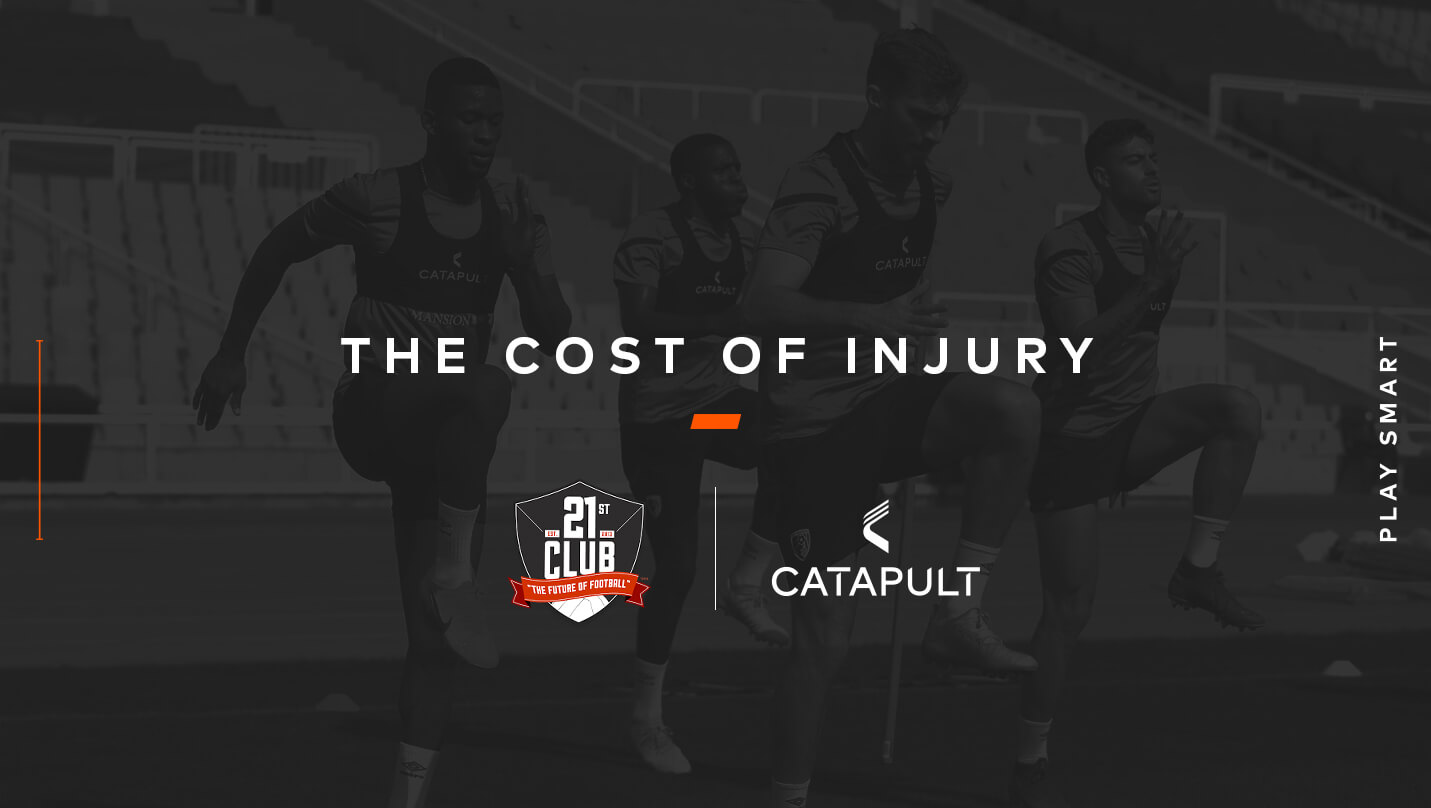
Athlete monitoring systems can mitigate these costs by reducing the incidence and severity of injuries, offering a substantial return on investment (ROI) for sports organizations.
Download this ebook to learn more about generating ROI on athlete monitoring technologies.
Fixture Congestion and Link to Injury
Fixture congestion, or the scheduling of multiple games in a short period, can significantly increase the risk of injuries due to inadequate recovery time. Monitoring systems help manage this risk by tracking players’ load and recovery metrics, ensuring they are not overburdened.
Watch this video by Kieran Howle, a sports scientist, to learn more about the effects of congested schedules on load, recovery, and injury in professional football players:
By leveraging athlete monitoring systems, teams can effectively reduce the risk of injuries, manage the physical demands of congested fixtures, and ensure their players remain in optimal condition throughout the season.
Download this ebook to learn more about mitigating injury risk during periods of fixture congestion.
Key Metrics and Indicators in Athlete Monitoring
Athlete monitoring systems track a variety of crucial parameters that provide valuable insights into an athlete’s physical condition and performance. By remaining knowledgeable about these key metrics, coaches and practitioners can identify early indicators of injury risk, allowing them to take proactive measures to prevent injuries.
Heart Rate, Fatigue & Workload Impact
Heart Rate Variability (HRV)
A key indicator of an athlete’s recovery status and overall well-being is Heart rate variability (HRV) is a. Monitoring HRV helps in understanding how an athlete’s body is responding to training loads and stress. Low HRV can indicate fatigue, stress, or overtraining, which increases the risk of injury. By tracking HRV, coaches can adjust training intensity to ensure optimal recovery and reduce injury risk.
Fatigue Levels
Fatigue is a critical factor that can significantly impact an athlete’s performance and injury risk. Monitoring fatigue levels through subjective measures (e.g., athlete self-reports) and objective data (e.g., performance metrics) helps in identifying when an athlete is at risk of overtraining. High levels of fatigue can lead to decreased performance and an increased likelihood of injury, especially soft tissue injuries.
Workload
Workload monitoring involves tracking the amount and intensity of training and competition. Understanding an athlete’s workload is essential for preventing overtraining and ensuring they are not exposed to excessive physical demands. By carefully managing workload, coaches can balance training intensity with adequate recovery, reducing the risk of injuries.
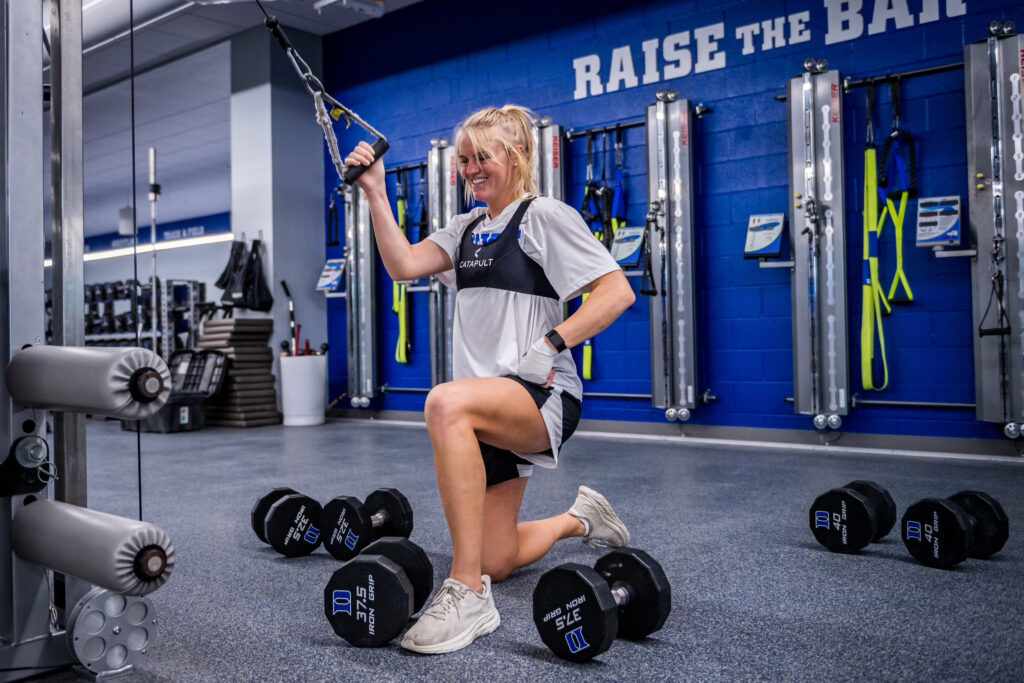
By closely monitoring these key metrics—heart rate variability, fatigue levels, and workload—athlete monitoring systems provide a comprehensive view of an athlete’s physical state. This data-driven approach enables coaches to make informed decisions about training adjustments, recovery protocols, and injury prevention strategies, ultimately protecting athletes and enhancing their performance.
Tailoring Prevention: Sports-Specific Monitoring
Different sports have unique demands that require specialized monitoring approaches. Athlete monitoring systems adapt to these specific needs, ensuring accurate data collection and meaningful insights for each sport.
Football/Soccer
Football requires constant movement, with players covering large distances and performing frequent sprints. Monitoring systems track metrics such as distance covered, sprint count, and player load to manage fatigue and prevent overtraining. By analyzing this data, coaches can adjust training loads and recovery periods, helping to reduce the risk of muscle strains and other injuries common in football.
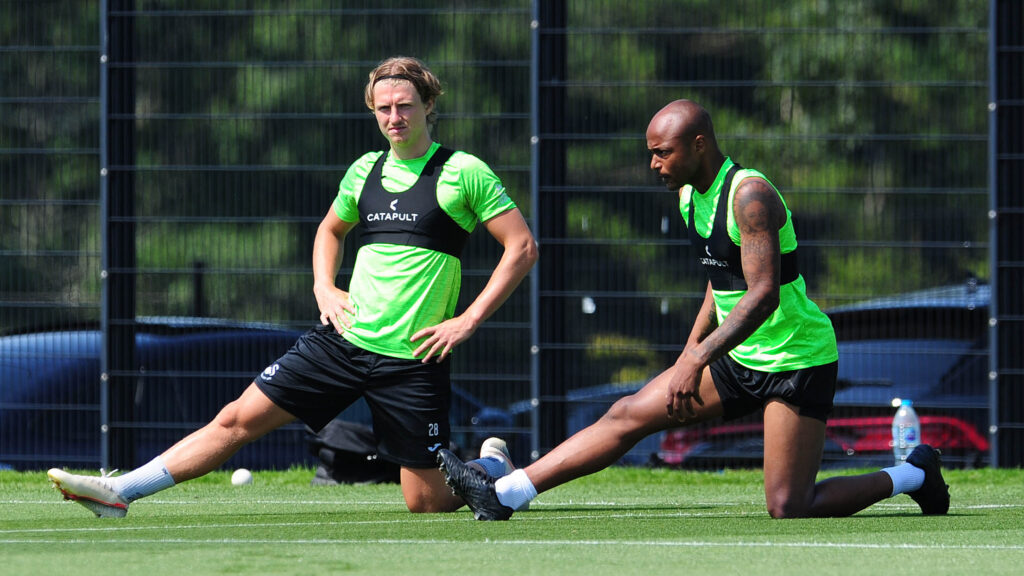
Rugby
Rugby is a high-impact sport with a significant risk of injury due to its physical nature. World Rugby has implemented initiatives to reduce injury risk, including tracking player workload through load passports. Athlete monitoring technologies provide detailed data on training and match loads, enabling teams to optimize performance and support injury prevention.
Catapult’s OpenField software generates comprehensive load passports, integrating data from various sources to meet World Rugby’s requirements.
Basketball
Basketball involves frequent jumps, rapid direction changes, and high-intensity sprints. Monitoring systems focus on metrics such as jump height, acceleration, and deceleration to assess an athlete’s workload and performance. This data helps coaches manage training intensity and prevent overuse injuries, ensuring players maintain peak performance throughout the season.
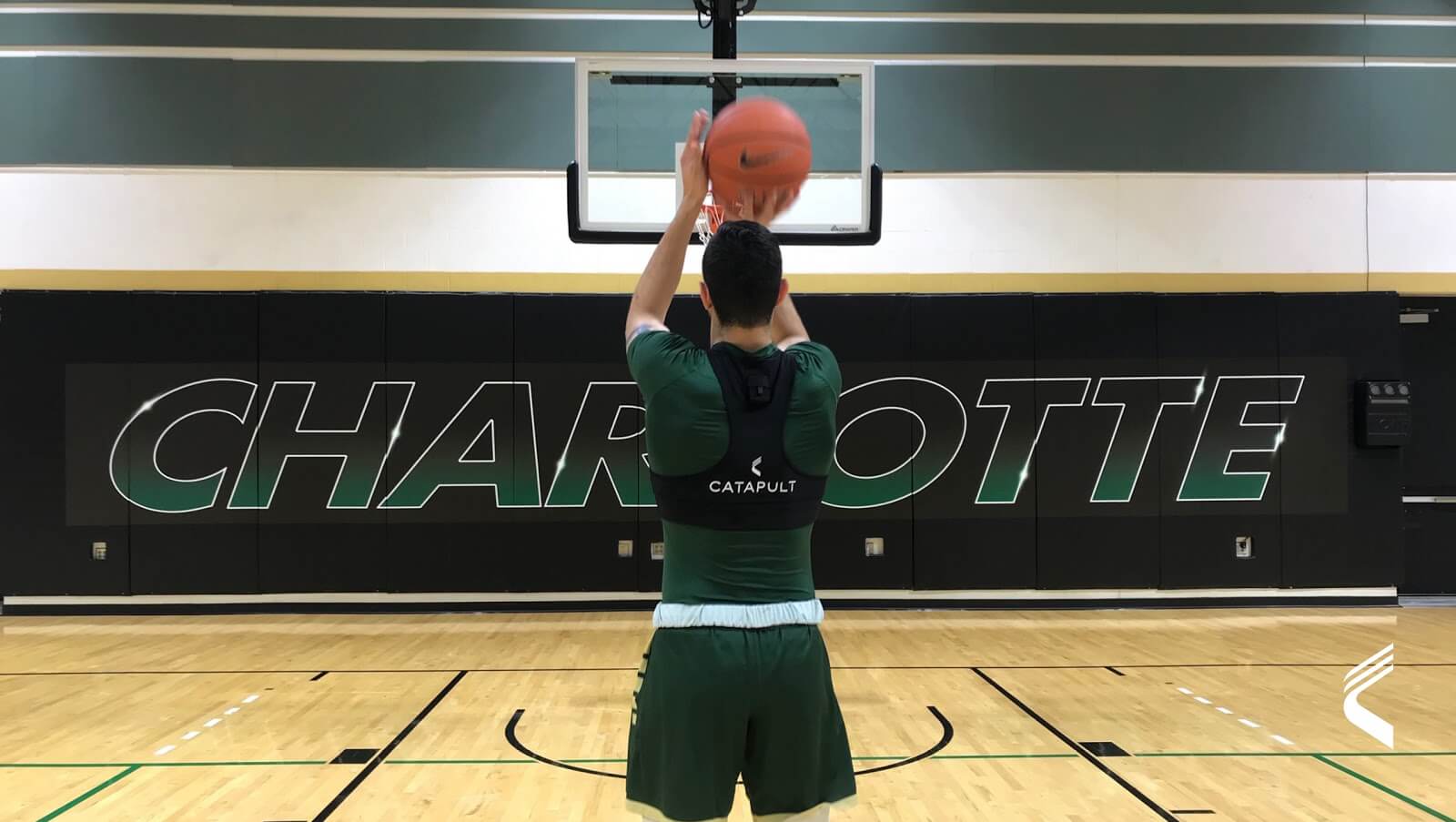
American Football
In American football, tracking practice volume, average speed, and game speed is essential to minimize soft tissue injuries. Athlete monitoring systems provide instant feedback, fostering healthy competition and performance improvements. By evaluating fatigue and training stimuli, teams can optimize training volumes and reduce the risk of hamstring and other injuries.
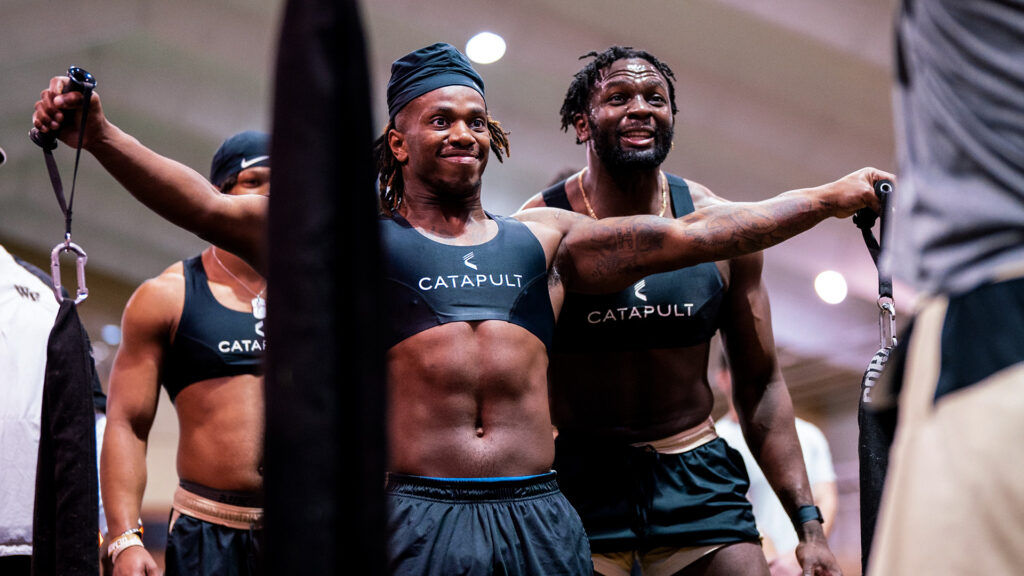
Ice Hockey
Ice hockey is a fast-paced sport with frequent collisions and high physical demands. Monitoring systems track metrics such as player load, skating speed, and impact forces to help coaches manage workload and recovery. This data-driven approach reduces the risk of injuries and supports optimal performance.
Learn more about how ice hockey coaches use athlete monitoring technology.

Baseball
Baseball requires precise tracking of throw, pitch, and swing counts to prevent overuse injuries. Catapult’s enhanced baseball analytics suite offers improved data accuracy and injury prevention features, helping teams reduce the risk of injuries that cost professional teams $423 million annually. Among the metrics provided for each event tracked in Baseball Analytics are:
- Throw, pitch, and swing count
- Max Rotation by throw, pitch, and swing
- Max PlayerLoad by throw, pitch, and swing
- Sum of Max PlayerLoad per all events of that type
Integral to the development of the enhanced analytics suite was Former Catapult Customer Success Specialist Ed Liggett. Throughout development, testing, and rollout to existing customers, Liggett spent countless hours with 36 MLB and NCAA athletes, assessing more than 800 baseball-specific events to ensure the analytics worked to resolve the challenges coaches, analysts, and athletes face daily.
Watch this video to learn more about how data empowers load monitoring in baseball:
By tailoring monitoring approaches to the specific demands of each sport, athlete monitoring systems provide valuable insights that help prevent injuries and enhance performance across various athletic disciplines.
Integration with Athlete Training Programs
Athlete monitoring systems are designed to seamlessly integrate with existing training programs. This provides coaches and practitioners with real-time data that enhances decision-making and optimizes athlete performance. By incorporating these systems into daily routines, teams can ensure that training loads are managed effectively, recovery is prioritized, and injury risks are minimized.
Real-Time Data
One of the most significant advantages of athlete monitoring systems is the ability to provide real-time data. Coaches use this data to make immediate adjustments to training loads based on the athlete’s current condition. For instance, if an athlete shows signs of excessive fatigue or elevated heart rate variability, the coach can reduce the training intensity or adjust the workout to focus on recovery. This proactive approach helps prevent overtraining and reduces the likelihood of injuries.
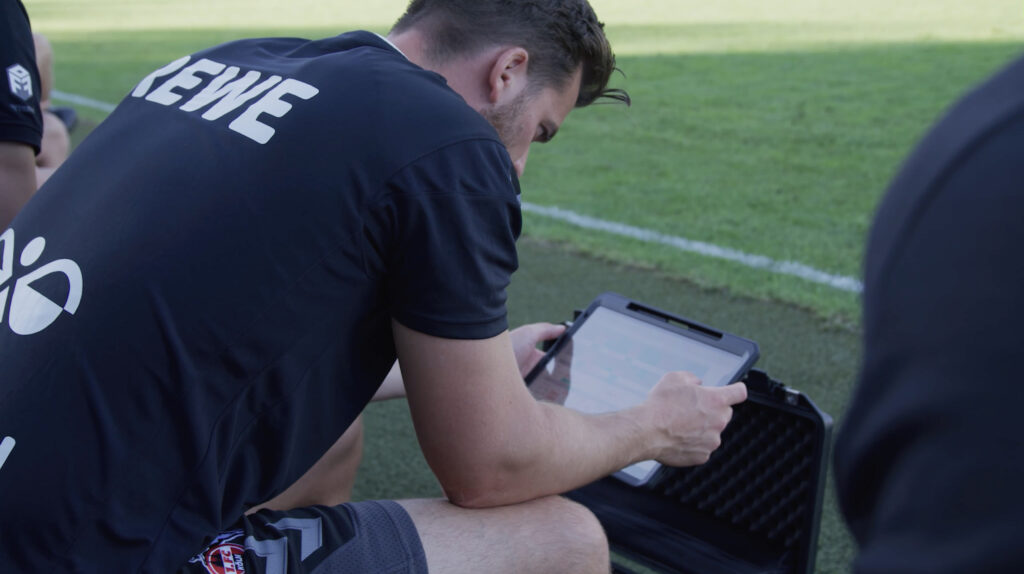
Real-time data also allows for dynamic training sessions. Coaches can modify drills and exercises on the fly, ensuring that each athlete is training at the appropriate intensity level. This immediate feedback loop is crucial for maintaining optimal performance and health. For example, if an athlete’s workload data indicates they are nearing a threshold that could lead to overuse injuries, the coach can implement rest periods or lighter activities to balance the load.
By integrating real-time data into training programs, teams can create a responsive training environment that adapts to the needs of the athletes. This integration ensures that training is both efficient and safe, supporting long-term athlete development and performance sustainability.
The seamless integration of athlete monitoring systems into training programs provides a comprehensive approach to athlete management. By utilizing real-time data, coaches can make informed decisions that enhance training effectiveness and prioritize athlete health. Ultimately leading to better performance and reduced injury risks.
Case Studies: Success Stories in Sports Injury Prevention
Duke Basketball Injury Monitoring
Duke Basketball has been at the forefront of integrating athlete monitoring systems to enhance player performance and manage injury risks. Nick Potter, the Director of High Performance & Sports Science at Duke Basketball, demonstrates how monitoring technology supports athletes, like Tre Jones. By tracking various performance metrics and recovery indicators, the team ensures that players receive tailored support to improve their performance and return to play after injury.
Watch the video to learn more about Duke Basketball’s injury monitoring system:
Game Changer Performance (GCP)
Game Changer Performance (GCP) is a leading sports performance company located at England’s National Football Centre, St George’s Park. GCP runs the Professional Footballers’ Association’s (PFA) residential rehabilitation program, providing players access to world-class rehab facilities and support. In 2018, GCP partnered with Catapult to integrate advanced monitoring technologies into their program. This collaboration allows GCP to quantify and optimize the rehabilitation process, ensuring athletes recover effectively and return to play in peak conditions.
The use of Catapult’s systems at GCP has been instrumental in managing the rehabilitation process, providing data that helps tailor recovery programs to the specific needs of each athlete. This data-driven approach ensures that athletes receive the best possible care and support during their recovery journey.
Watch the video to see how GCP utilizes Catapult’s technologies in their rehabilitation program:
Conclusion
Injury prevention in sports is a multifaceted challenge that requires a combination of proactive care, advanced monitoring technologies, and tailored training programs. By integrating athlete monitoring systems, teams can gain valuable insights into their athletes’ performance and health. This enables them to make informed decisions that reduce injury risks and enhance performance.
Whether you’re looking to prevent injuries, mitigate existing ones, or better understand the environments that lead to overloading athletes, Catapult’s team is ready to help. Our advanced monitoring solutions provide the data and insights needed to support athletes at every stage of their journey.
To learn more about how Catapult can assist your team with injury prevention and performance optimization, get in touch with us today.